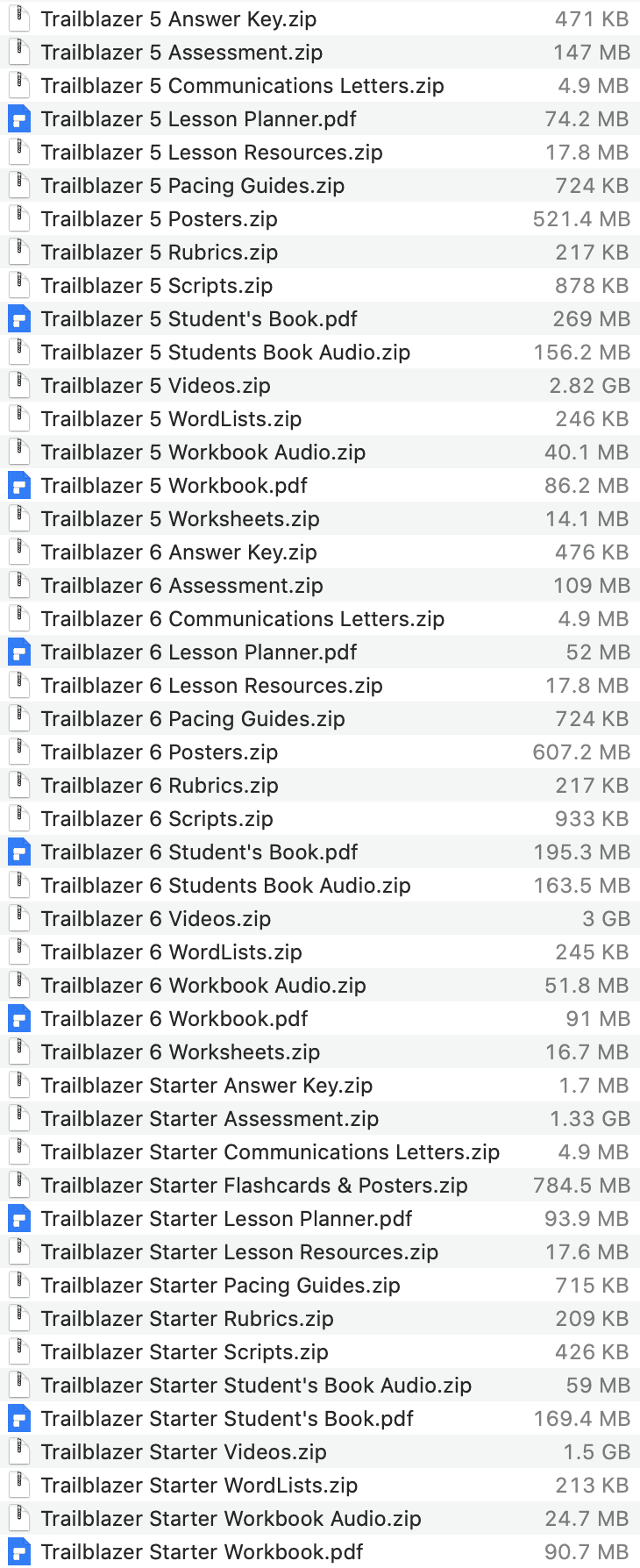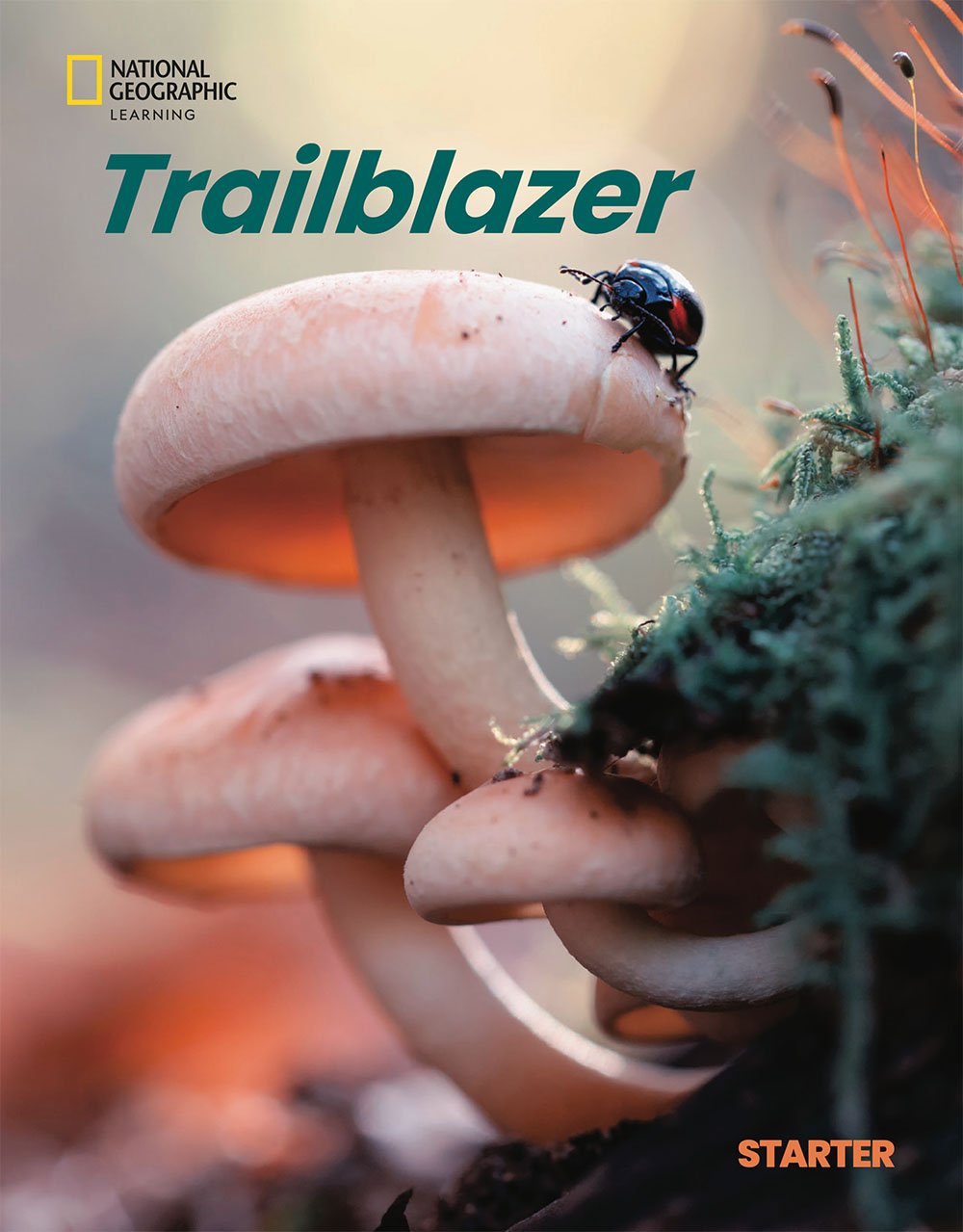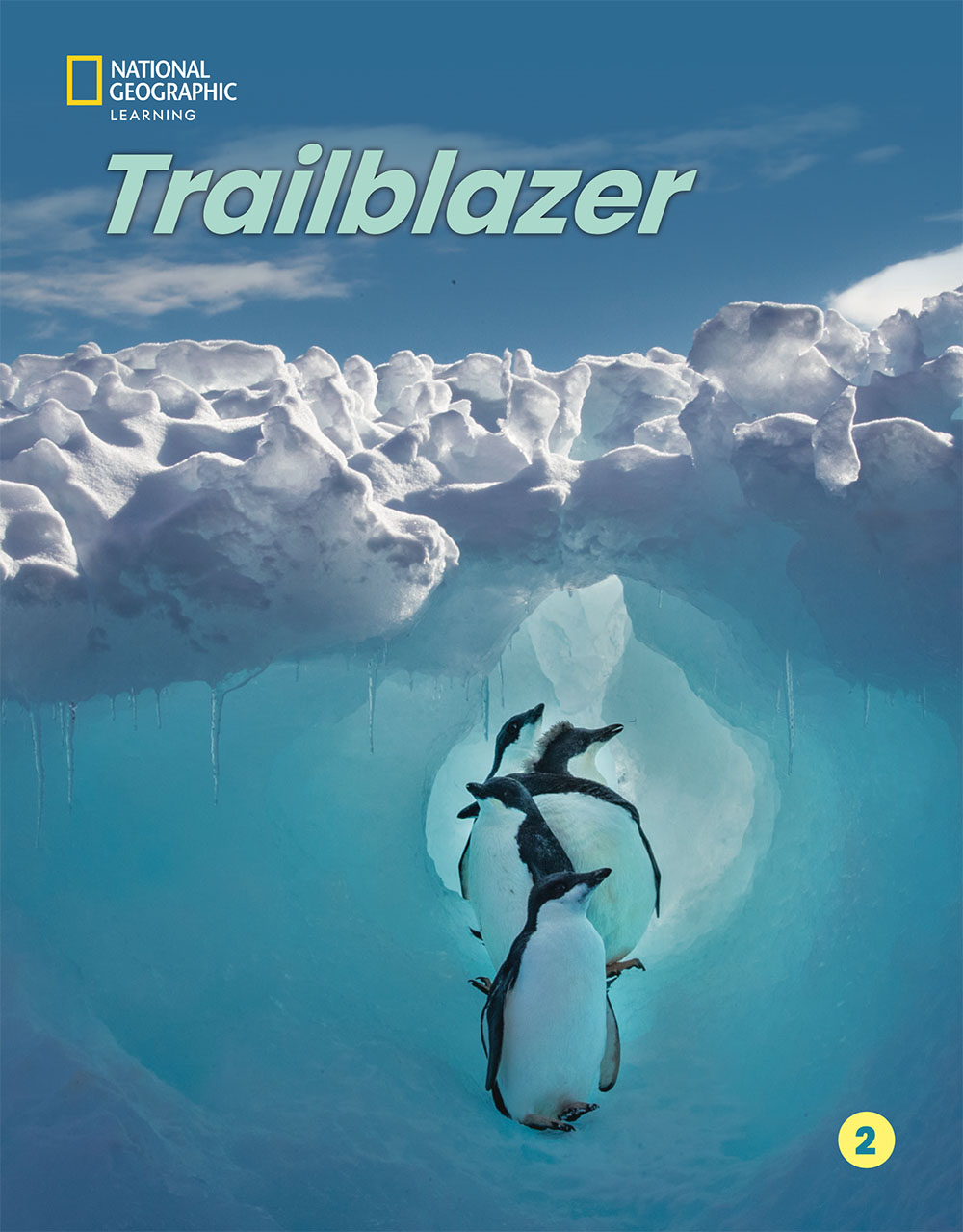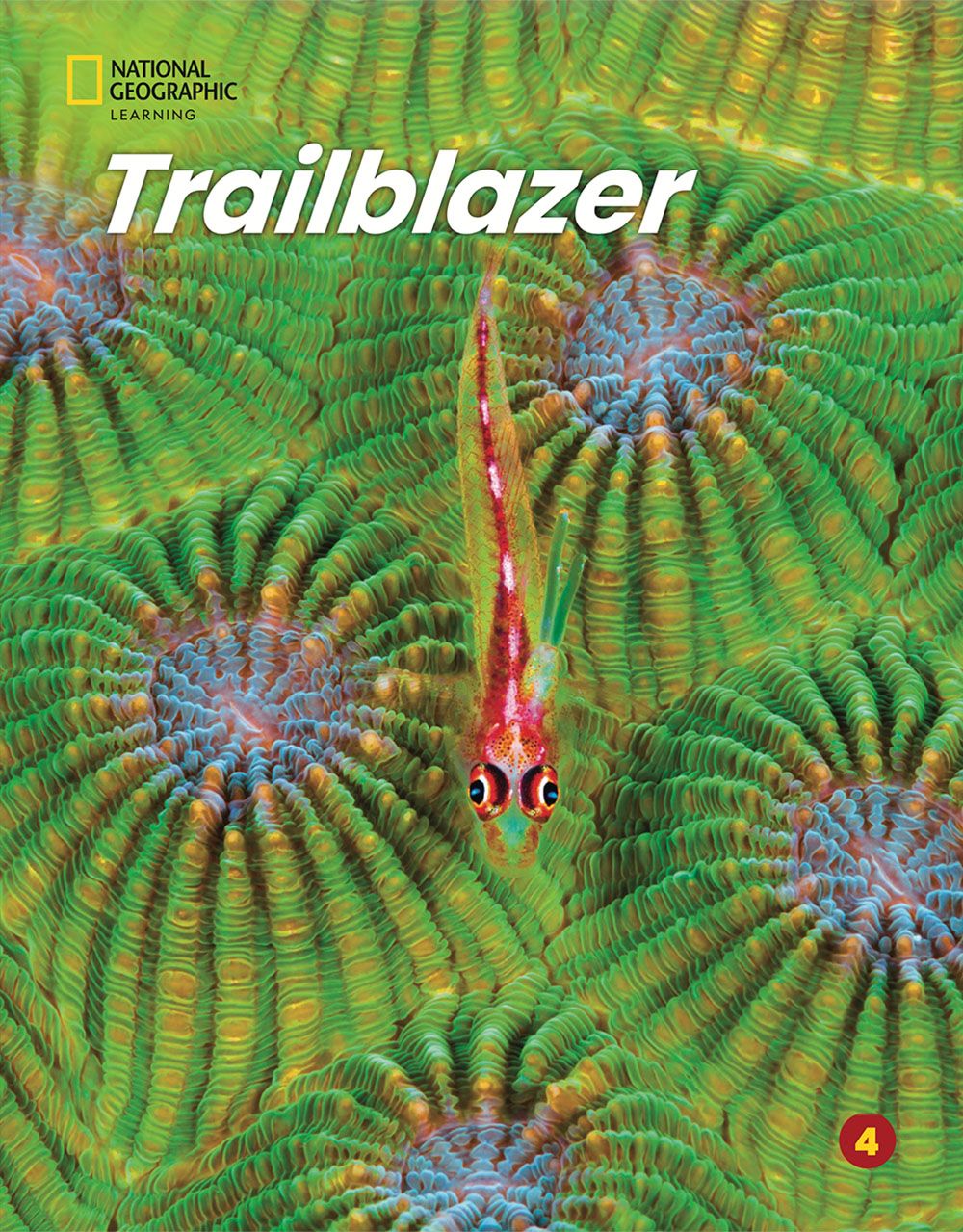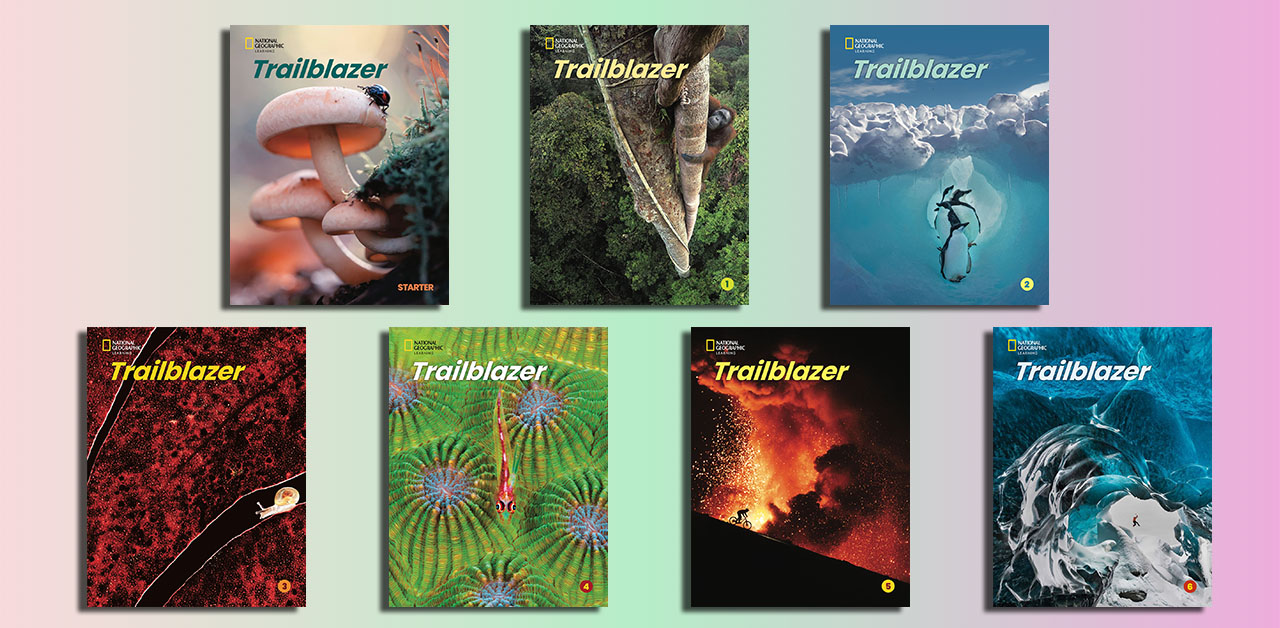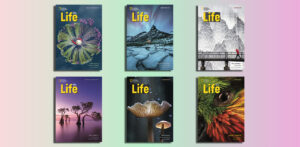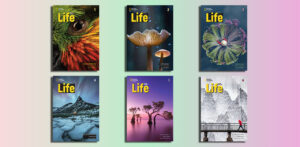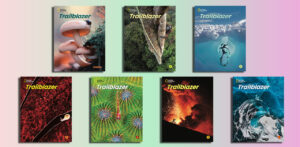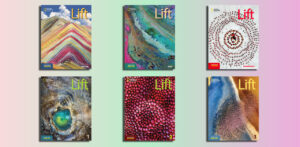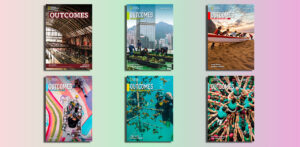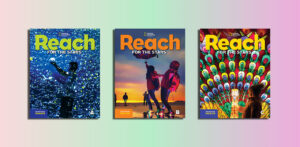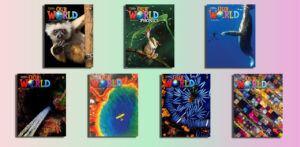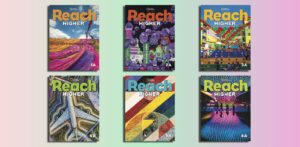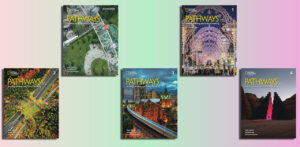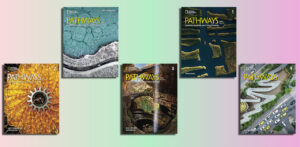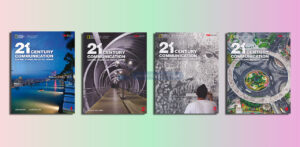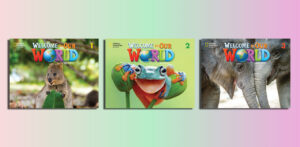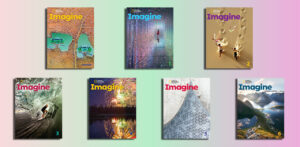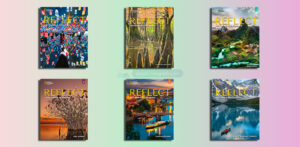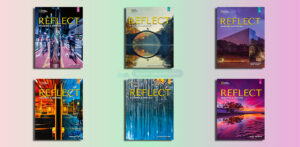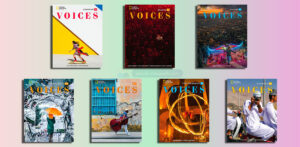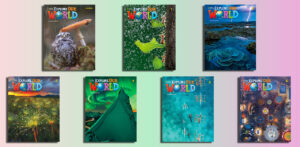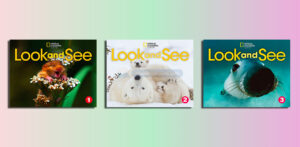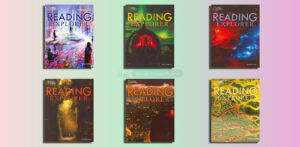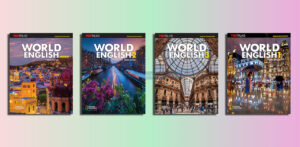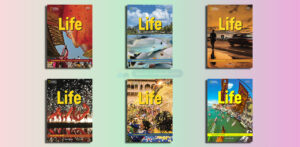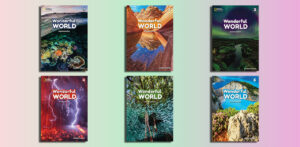National Geographic, Download
Download NGL Trailblazer PDF Resources (Pre A1 – B1+) 2025
Trailblazer (PDFs, Resources)
Level 1
Trailblazer 1 Answer Key.zip
Trailblazer 1 Assessment.zip
Trailblazer 1 Communications Letters.zip
Trailblazer 1 Flashcards & Posters.zip
Trailblazer 1 Lesson Planner.pdf – Sample: Click
Trailblazer 1 Lesson Resources.zip
Trailblazer 1 Pacing Guides.zip
Trailblazer 1 Rubrics.zip
Trailblazer 1 Scripts.zip
Trailblazer 1 Student’s Book.pdf – Sample: Click
Trailblazer 1 Students Book Audio.zip
Trailblazer 1 Videos.zip
Trailblazer 1 WordLists.zip
Trailblazer 1 Workbook Audio.zip
Trailblazer 1 Workbook.pdf – Sample: Click
Trailblazer 1 Worksheets.zip
Level 2
Trailblazer 2 Answer Key.zip
Trailblazer 2 Assessment.zip
Trailblazer 2 Communications Letters.zip
Trailblazer 2 Flashcards & Posters.zip
Trailblazer 2 Lesson Planner.pdf – Sample: Click
Trailblazer 2 Lesson Resources.zip
Trailblazer 2 Pacing Guides.zip
Trailblazer 2 Rubrics.zip
Trailblazer 2 Scripts.zip
Trailblazer 2 Student’s Book Audio.zip
Trailblazer 2 Student’s Book.pdf – Sample: Click
Trailblazer 2 Videos.zip
Trailblazer 2 WordLists.zip
Trailblazer 2 Workbook Audio.zip
Trailblazer 2 Workbook.pdf – Sample: Click
Trailblazer 2 Worksheets.zip
Level 3
Trailblazer 3 Answer Key.zip
Trailblazer 3 Assessment.zip
Trailblazer 3 Communications Letters.zip
Trailblazer 3 Flashcards & Posters.zip
Trailblazer 3 Lesson Planner.pdf – Sample: Click
Trailblazer 3 Lesson Resources.zip
Trailblazer 3 Rubrics.zip
Trailblazer 3 Scripts.zip
Trailblazer 3 Student’s Book Audio.zip
Trailblazer 3 Student’s Book.pdf – Sample: Click
Trailblazer 3 Videos.zip
Trailblazer 3 WordLists.zip
Trailblazer 3 Workbook Audio.zip
Trailblazer 3 Workbook.pdf – Sample: Click
Trailblazer 3 Worksheets.zip
Level 4
Trailblazer 4 Answer Key.zip
Trailblazer 4 Assessment.zip
Trailblazer 4 Communications Letters.zip
Trailblazer 4 Lesson Planner.pdf – Sample: Click
Trailblazer 4 Lesson Resources.zip
Trailblazer 4 Pacing Guides.zip
Trailblazer 4 Posters.zip
Trailblazer 4 Rubrics.zip
Trailblazer 4 Scripts.zip
Trailblazer 4 Student’s Book.pdf – Sample: Click
Trailblazer 4 StudentsBook Audio.zip
Trailblazer 4 Videos.zip
Trailblazer 4 WordLists.zip
Trailblazer 4 Workbook Audio.zip
Trailblazer 4 Workbook.pdf – Sample: Click
Trailblazer 4 Worksheets.zip
Level 5
Trailblazer 5 Answer Key.zip
Trailblazer 5 Assessment.zip
Trailblazer 5 Communications Letters.zip
Trailblazer 5 Lesson Planner.pdf – Sample: Click
Trailblazer 5 Lesson Resources.zip
Trailblazer 5 Pacing Guides.zip
Trailblazer 5 Posters.zip
Trailblazer 5 Rubrics.zip
Trailblazer 5 Scripts.zip
Trailblazer 5 Student’s Book.pdf – Sample: Click
Trailblazer 5 Students Book Audio.zip
Trailblazer 5 Videos.zip
Trailblazer 5 WordLists.zip
Trailblazer 5 Workbook Audio.zip
Trailblazer 5 Workbook.pdf – Sample: Click
Trailblazer 5 Worksheets.zip
Level 6
Trailblazer 6 Answer Key.zip
Trailblazer 6 Assessment.zip
Trailblazer 6 Communications Letters.zip
Trailblazer 6 Lesson Planner.pdf – Sample: Click
Trailblazer 6 Lesson Resources.zip
Trailblazer 6 Pacing Guides.zip
Trailblazer 6 Posters.zip
Trailblazer 6 Rubrics.zip
Trailblazer 6 Scripts.zip
Trailblazer 6 Student’s Book.pdf – Sample: Click
Trailblazer 6 Students Book Audio.zip
Trailblazer 6 Videos.zip
Trailblazer 6 WordLists.zip
Trailblazer 6 Workbook Audio.zip
Trailblazer 6 Workbook.pdf – Sample: Click
Trailblazer 6 Worksheets.zip
Level Starter
Trailblazer Starter Answer Key.zip
Trailblazer Starter Assessment.zip
Trailblazer Starter Communications Letters.zip
Trailblazer Starter Flashcards & Posters.zip
Trailblazer Starter Lesson Planner.pdf – Sample: Click
Trailblazer Starter Lesson Resources.zip
Trailblazer Starter Pacing Guides.zip
Trailblazer Starter Rubrics.zip
Trailblazer Starter Scripts.zip
Trailblazer Starter Student’s Book Audio.zip
Trailblazer Starter Student’s Book.pdf – Sample: Click
Trailblazer Starter Videos.zip
Trailblazer Starter WordLists.zip
Trailblazer Starter Workbook Audio.zip
Trailblazer Starter Workbook.pdf – Sample: Click

Overview of the “Trailblazer” by NGL
Contents
| ✅ Coursebook: | Trailblazer |
| ✅ Publisher: | National Geographic Learning |
| ✅ English type: | International English |
| ✅ For: | Primary |
| ✅ Levels: | Pre A1, A1, A1+, A2, A2+, B1, B1+ |
| ✅ Publication year: | 2025 |
What is Trailblazer by NGL?
Trailblazer is a dynamic English language and literacy program that caters to young learners aged 6 to 12. With its clear focus on skill-building and real-world relevance, the program supports learners across proficiency levels from Pre-A1 to B1+, in alignment with the Common European Framework of Reference for Languages (CEFR).
The beauty of Trailblazer lies in its comprehensive approach—integrating language skills with cultural awareness, creativity, and critical thinking. By immersing students in a blend of fiction and nonfiction materials, the program not only develops language abilities but also nurtures curiosity and a deeper understanding of the world around them.
Key Features of the Trailblazer Program
Real-World Learning: At the heart of the Trailblazer series is its use of authentic content sourced from National Geographic Explorers. This approach ensures that students engage with real-world topics, sparking curiosity while developing essential critical thinking and problem-solving skills. By incorporating captivating visuals and intriguing facts, learners are not just improving their English; they are becoming explorers in their own right.
Multi-Component Learning: Trailblazer provides a well-rounded learning experience with a variety of resources. These include the Student Book, Workbook, Literacy Anthology, and Combo Split Editions. Each component is designed to support specific aspects of language development, from reading comprehension to writing skills, giving students the chance to practice at their own pace.
Digital Engagement: The series is supported by Spark, an interactive digital platform that enhances the learning process. Spark provides lesson planning tools, student assessments, and opportunities for interactive engagement, making it easier for educators to manage and track student progress. The digital aspect helps foster a more engaging, personalized learning experience that students enjoy.
Multiple Literacies Approach: Trailblazer does not focus solely on traditional language skills. The program emphasizes a multiple literacies approach, promoting not just language proficiency but also critical communication, creativity, and digital literacy. These skills are invaluable as students prepare to face the challenges of the 21st century.
Assessment and Progress Tracking: A key feature of Trailblazer is its comprehensive assessment suite. This feature empowers educators to track each student’s progress, identify learning gaps, and adjust instruction accordingly. Tailored support ensures that no student is left behind, fostering an environment of success and growth.
Trailblazer Starter Student’s Book
Who is suitable for “Trailblazer”?
The Trailblazer series by National Geographic Learning is designed for young learners, specifically those aged 6 to 12 years, and is suitable for a variety of educational settings. Here’s a breakdown of the ideal audience:
1. Primary School Students (Ages 6-12)
- Beginners to Intermediate Learners: Trailblazer covers proficiency levels from Pre-A1 to B1+ (beginner to intermediate), making it suitable for young learners just starting their English learning journey as well as those with a bit more experience.
- English Language Learners (ELLs): The program is an excellent choice for students who are learning English as a second language, as it integrates both language skills and literacy development through engaging, real-world content.
2. Teachers and Educators
- Primary School Teachers: Educators teaching English as a foreign language (EFL) or English language arts (ELA) in primary schools will find the series a valuable tool for engaging their students while meeting curriculum goals.
- Teachers Seeking Real-World Content: Trailblazer’s use of National Geographic content makes it particularly suitable for educators who want to introduce students to global cultures, environmental science, and real-world issues, enhancing both language skills and general knowledge.
Trailblazer 2 Student’s Book
3. Homeschooling Parents
- Parents Looking for an All-in-One Learning Solution: With its structured approach and a range of support materials, Trailblazer is a great choice for parents who are homeschooling their children and want a comprehensive and engaging English language program.
4. Students Who Enjoy Interactive Learning
- Tech-Savvy Learners: The inclusion of the Spark digital platform makes Trailblazer an appealing choice for children who are comfortable with interactive digital tools, offering a more engaging and personalized learning experience.
5. Students Interested in Cultural Awareness
- Young Explorers and Curious Minds: As the program integrates real-world content from National Geographic Explorers, it is particularly suitable for students with an interest in exploration, nature, and global cultures, encouraging curiosity and critical thinking.
In summary, Trailblazer is ideal for young learners (ages 6-12) who are starting their English journey or have some foundation, as well as teachers and homeschooling parents looking for an engaging, multi-sensory learning experience. The program supports a wide range of proficiency levels and includes interactive tools, making it suitable for a variety of educational contexts.
Trailblazer 3 Student’s Book
The benefits of “Trailblazer”
The Trailblazer series by National Geographic Learning offers a multitude of benefits for both learners and educators. This comprehensive English language program not only helps young students develop essential language skills but also nurtures curiosity, critical thinking, and global awareness. Here are the key benefits of the Trailblazer program:
1. Real-World Learning
- Authentic Content: Trailblazer integrates National Geographic Explorers content, exposing students to real-world topics such as nature, global cultures, and environmental science. This not only improves language skills but also fosters a deeper understanding of the world.
- Encourages Curiosity: Students engage with material that is both educational and exciting, sparking curiosity and a passion for learning. This helps keep young learners engaged and motivated throughout their studies.
2. Comprehensive Skill Development
- Integrated Literacy Approach: The program goes beyond language acquisition, focusing on the development of essential literacy skills, including reading, writing, listening, and speaking. It helps students build confidence in all aspects of communication.
- Critical Thinking & Problem-Solving: Through engaging activities and thought-provoking content, Trailblazer encourages critical thinking and problem-solving skills, which are essential in both academic settings and real-world situations.
3. Interactive and Digital Learning
- Digital Platform – Spark: Trailblazer comes with the Spark platform, a powerful tool that enhances the learning experience by offering interactive lessons, engaging activities, and real-time assessments. Teachers can personalize the learning process, and students can access a variety of digital resources to reinforce their knowledge.
- Engagement Through Technology: The digital features ensure that students are actively engaged, allowing them to learn in a way that is more fun and interactive compared to traditional methods.
4. Flexible and Comprehensive Learning Materials
- Variety of Resources: Trailblazer offers a range of learning materials, including the Student Book, Workbook, Literacy Anthology, and Combo Split Editions. This flexibility allows for a more personalized approach, with resources available for different learning styles and needs.
- Supplementary Resources: The Workbook provides extra practice, reinforcing what students learn in the core materials, while the Literacy Anthology exposes them to additional reading materials, deepening their literacy skills.
Trailblazer 4 Student’s Book
5. Progress Tracking and Tailored Learning
- Assessment Suite: One of the key benefits of Trailblazer is its comprehensive assessment suite, which helps educators track student progress. This allows teachers to identify areas where students may need additional support and adjust their teaching methods accordingly.
- Personalized Learning: The program’s design ensures that no student is left behind. Educators can use assessments to tailor the learning experience to the unique needs of each student, offering targeted support when necessary.
6. Encourages Multiple Literacies
- Developing Global Citizenship: Trailblazer places a strong emphasis on multiple literacies—critical thinking, communication, and digital literacy. These skills help students become well-rounded individuals, capable of navigating a diverse, interconnected world.
- Building Communication Skills: The focus on communication, whether through speaking or writing, helps students become effective communicators. This is essential not only in language learning but also in all aspects of life, including academic and personal interactions.
7. Engaging for Young Learners
- Age-Appropriate Content: With age-appropriate content for young learners, Trailblazer keeps students engaged while still challenging them at their level. The program’s diverse genres of fiction and nonfiction cater to a wide range of interests, ensuring that students stay motivated.
- Fun and Interactive Activities: The combination of engaging content and interactive learning activities makes Trailblazer enjoyable for young students, ensuring that learning never feels like a chore.
8. Supports Global Learning Standards
- Alignment with CEFR: Trailblazer is aligned with the Common European Framework of Reference for Languages (CEFR), ensuring that students’ progress is in line with internationally recognized language learning standards. This makes it easy for educators to track progress and assess students’ abilities against global benchmarks.
Trailblazer 5 Student’s Book
Effective learning strategies for “Trailblazer”
The Trailblazer series by National Geographic Learning is designed to engage young learners while helping them develop essential language skills. To make the most out of this program, here are some effective learning strategies that educators and students can implement:
1. Interactive Learning through Spark
- Utilize the Spark Platform: Trailblazer’s Spark digital platform offers a variety of interactive lessons and engaging activities. Teachers should leverage this tool to create dynamic and personalized lessons. Encourage students to explore the interactive exercises, digital assessments, and multimedia content to enhance their understanding and engagement with the material.
- Incorporate Games and Quizzes: Use the platform’s quizzes and games to reinforce learning in a fun way. These interactive features not only motivate students but also provide instant feedback, helping them track their progress and address areas of improvement.
2. Focus on Real-World Content
- Discuss Real-World Topics: Since Trailblazer integrates National Geographic Explorers content, encourage students to discuss the real-world topics presented in the lessons. Use these discussions to connect the lessons with students’ own lives and experiences. This helps students see the relevance of the material beyond the classroom and fosters curiosity.
- Project-Based Learning: Assign students projects based on the real-world content in the lessons. This could include researching topics related to the material or creating presentations that demonstrate their understanding. Projects help students deepen their knowledge while developing presentation and collaboration skills.
3. Collaborative Learning
- Pair and Group Work: Trailblazer encourages both independent and collaborative learning. Organize students into pairs or small groups to complete activities together, such as reading comprehension exercises or creative writing tasks. Collaborative learning promotes communication, teamwork, and peer support, allowing students to learn from each other.
- Peer Teaching: Allow students to explain concepts to each other. This technique reinforces their understanding and builds confidence. Peer teaching can also help students articulate their thoughts more clearly and grasp difficult concepts in new ways.
Trailblazer 1 Student’s Book
4. Emphasize Multiple Literacies
- Integrate Critical Thinking: Encourage students to analyze and question the content they read. For instance, after reading a passage, ask them to identify the key message, evaluate the author’s point of view, or compare the material with other sources. This enhances their critical thinking and comprehension skills.
- Promote Digital Literacy: Since Trailblazer incorporates a digital platform, teach students how to navigate online resources, conduct research, and present information using digital tools. Digital literacy is essential in today’s world and will help students build the necessary skills to succeed in a tech-driven environment.
5. Incorporate Continuous Assessment
- Formative Assessment: Use the assessment suite provided by Trailblazer to monitor students’ progress regularly. Conduct short quizzes and assignments to assess their understanding. This helps identify gaps in knowledge early, allowing teachers to adjust their instruction to meet the needs of each student.
- Provide Timely Feedback: Give students regular feedback on their performance, especially on written and spoken tasks. Constructive feedback helps them understand where they need to improve and encourages them to keep progressing.
6. Scaffold Learning
- Start Simple and Build Complexity: Begin with simpler concepts and gradually introduce more complex ones. This scaffolding approach ensures that students are not overwhelmed and can build a solid foundation before tackling advanced topics.
- Use Visual Aids: Visual aids such as infographics, charts, and videos can help students understand and retain difficult concepts more effectively. Incorporate multimedia content from National Geographic Explorers to make learning more accessible and engaging.
7. Create a Structured Routine
- Consistent Learning Schedule: Establish a consistent learning schedule with clear expectations. Regular lessons and practice sessions help reinforce learning and improve retention. Ensure that each lesson has a clear learning objective and provides opportunities for students to reflect on what they have learned.
- Interactive Warm-ups and Recaps: Start each lesson with an interactive warm-up, such as a short review of previous lessons or a quick discussion of a related topic. Conclude each session with a recap to reinforce key points and ensure students retain the material.
8. Foster a Growth Mindset
- Encourage Perseverance: Promote a growth mindset where students understand that learning is a process, and making mistakes is part of the journey. Encourage students to view challenges as opportunities for growth, which will boost their confidence and motivation.
- Celebrate Achievements: Recognize and celebrate students’ progress, whether it’s a small improvement in language skills or a successful project. Positive reinforcement motivates students and encourages them to continue striving for success.
9. Engage Parents and Caregivers
- Involve Parents in the Learning Process: Encourage parents to review students’ work and engage in discussions about what their children are learning. This can help students feel more supported and motivated both at school and at home.
- Provide Resources for Home Practice: Share additional learning resources, such as reading materials or digital activities, with parents to extend the learning process outside of school.
Trailblazer 6 Student’s Book
Effective teaching strategies for “Trailblazer”
To maximize the impact of the Trailblazer series by National Geographic Learning, educators can adopt various teaching strategies that leverage the program’s unique features. These strategies focus on fostering engagement, enhancing language skills, and supporting the development of critical thinking and literacy. Here are the most effective teaching strategies for Trailblazer:
1. Leverage the Spark Platform for Interactive Lessons
- Utilize Digital Tools: Trailblazer comes with the Spark digital platform, which offers interactive features such as quizzes, games, and multimedia content. Teachers should integrate these digital tools into their lessons to make learning more dynamic and engaging.
- Interactive Learning Activities: Create lessons that incorporate interactive exercises where students can practice vocabulary, grammar, and comprehension. This promotes active participation, as students can immediately apply what they’ve learned in a fun, technology-driven environment.
- Monitor Progress in Real-Time: Use the platform’s real-time assessments to track student performance and adjust instruction accordingly. This allows for immediate feedback and helps keep students engaged in the learning process.
2. Incorporate Project-Based Learning (PBL)
- Real-World Projects: Encourage students to work on projects related to the National Geographic content they are studying. For example, after reading about different cultures or ecosystems, students can create presentations, posters, or even short documentaries to share their understanding.
- Collaborative Learning: In project-based tasks, students work together to research, create, and present their findings. This strategy fosters teamwork, communication, and critical thinking while allowing students to engage deeply with the material.
- Student-Centered Projects: Allow students to choose project topics based on their interests within the unit’s theme. This increases motivation and makes learning more relevant to their lives.
3. Emphasize Scaffolding and Gradual Progression
- Scaffold Language Development: Start each unit with basic concepts and gradually build up to more complex ideas. Scaffold lessons to support students at their own pace, starting with simpler tasks and progressing to more challenging ones as students gain confidence.
- Pre-Teach Vocabulary: Before diving into a new lesson, review essential vocabulary and phrases with students. This prepares them for the reading or listening activities that will follow, ensuring they are not overwhelmed and can engage more effectively with the content.
- Use Visual and Contextual Cues: Utilize visuals, videos, and real-world examples to help students understand new vocabulary and concepts. This strategy helps students make connections between the language and its real-world usage.
4. Incorporate Critical Thinking Activities
- Questioning Techniques: After reading or discussing a passage, ask higher-order questions that encourage critical thinking. For example, “What do you think the author’s purpose was?” or “How does this relate to what we know about the world?”
- Compare and Contrast: Engage students in comparison activities, where they analyze similarities and differences between two pieces of content. For example, compare environmental issues in different countries or compare fictional and nonfictional texts. This promotes critical analysis and helps students organize their thoughts.
- Problem-Solving Tasks: Incorporate activities that require students to apply critical thinking to solve problems. For instance, after studying ecosystems, students can discuss the environmental challenges different regions face and propose solutions.
5. Encourage Communication and Collaboration
- Pair and Group Work: Organize students into pairs or small groups to collaborate on tasks such as dialogues, debates, or problem-solving scenarios. This allows students to practice language skills in a supportive environment and encourages them to learn from one another.
- Peer Teaching: After a lesson, pair students to explain what they’ve learned to each other. This peer teaching strategy helps reinforce the material and gives students an opportunity to articulate their understanding, which deepens their own comprehension.
- Classroom Discussions: Encourage open-class discussions around the topics covered in the lessons. For instance, after reading a passage about world cultures, ask students to share their thoughts, opinions, and personal experiences related to the topic.
6. Incorporate Differentiated Instruction
- Adapt for Diverse Learning Styles: Recognize that students learn in different ways—some may be visual learners, while others may excel with hands-on activities or auditory content. Differentiate instruction by offering a variety of materials and activities to cater to diverse learning preferences.
- Provide Multiple Pathways: Offer students different routes to engage with content, such as audio, video, or written text. Allow students to choose how they access information, enabling them to engage in a way that aligns with their strengths.
- Offer Extra Support for Struggling Learners: Provide additional resources such as flashcards, online exercises, or individual tutoring sessions for students who need extra support. Ensure that each student has the opportunity to succeed at their own pace.
7. Use Real-World Connections
- Connect Lessons to Students’ Lives: Relate the content to students’ personal experiences and interests. For example, if the lesson is about global environmental issues, ask students about their local environment and how it compares to what they’re learning.
- Incorporate Current Events: Bring in real-world examples of the topics being studied, such as news articles or videos about global environmental challenges, cultural festivals, or scientific discoveries. This helps students see the relevance of what they’re learning and how it applies to the world around them.
- Field Trips and Guest Speakers: Whenever possible, organize field trips or invite guest speakers to talk about topics covered in the lessons, such as environmental conservation or cultural traditions. This provides students with tangible experiences that enhance their understanding.
8. Foster a Positive Learning Environment
- Create a Safe, Supportive Classroom: Establish an environment where students feel comfortable expressing themselves and making mistakes. Reinforce that mistakes are a part of the learning process, which encourages students to take risks and engage more confidently in their language learning.
- Celebrate Achievements: Regularly celebrate student accomplishments, whether through praise, rewards, or public recognition. This boosts students’ confidence and motivates them to continue working hard.
9. Promote Lifelong Learning
- Encourage Self-Reflection: Ask students to reflect on their learning progress at the end of each lesson. This could be through journaling, discussions, or self-assessment quizzes. Self-reflection helps students recognize their strengths and areas for improvement.
- Promote Independent Learning: Encourage students to engage in independent reading or exploration beyond the classroom. Provide resources such as books, websites, or documentaries related to the themes in Trailblazer to help them extend their learning outside of class.
Alternative English Learning Series for Primary School Students
Here are some alternative book series similar to “Trailblazer” for primary school students:
1. Super Minds by Cambridge University Press
- A series that builds language skills through fun stories, activities, and real-world topics. It encourages creativity and critical thinking while engaging students in interactive learning.
2. Family and Friends by Oxford University Press
- This series uses songs, stories, and games to develop vocabulary and communication skills, with a focus on real-life topics to help students apply English in context.
3. English Time by Oxford University Press
- An interactive series that supports a step-by-step approach to learning. It engages students with games, songs, and stories, building confidence in speaking, reading, and writing.
4. Our Discovery Island by Pearson
- Focuses on science and nature, integrating real-world topics into language learning. It helps students explore and learn English through engaging stories and activities.
5. Smart English by Pearson
- Uses a multi-sensory approach to teach English through interactive stories, games, and songs, promoting holistic language development and creativity.
6. Kid’s Box by Cambridge University Press
- This series offers a balanced approach to language learning, focusing on vocabulary, grammar, and communication, with real-world themes and engaging activities.
7. Poptropica English by Pearson
- Integrates the world of the Poptropica game with interactive stories and game-based learning, motivating students to practice English in a fun way.
8. English for Kids by Macmillan
- A beginner-level series using songs, games, and stories to build essential language skills, focusing on speaking, listening, reading, and writing.
9. Let’s Go by Oxford University Press
- This series is designed for young beginners and uses fun activities, songs, and games to build basic language skills in listening, speaking, and vocabulary. It’s ideal for engaging students in a playful and interactive environment.
These series offer engaging, interactive learning with a focus on real-world themes, making them great alternatives to “Trailblazer” for young learners.

